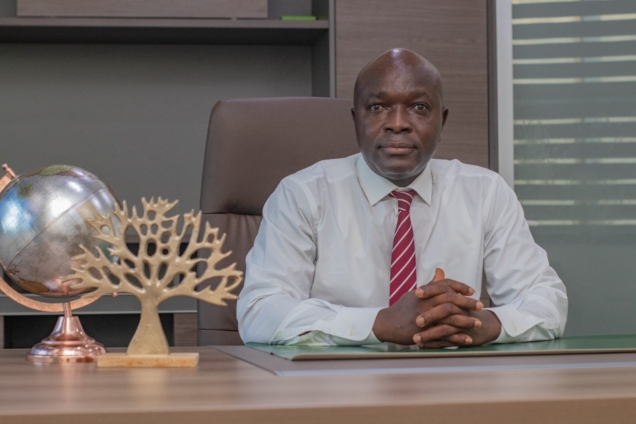Singapore And Japan's Strategic Aviation Partnership Accelerates Regional Growth Through Air Traffic Flow Management, Sustainable Practices, And Technological Innovation - Travel And Tour World
Tuesday, May 27, 2025

Singapore and Japan are building a trailblazing aviation partnership that’s aimed at transforming air connectivity, pushing the boundaries of cutting-edge technology, and defining a new vision of sustainable air travel. The progressive collaborations in air traffic management, aviation security, and integrating advanced air mobility are driving new heights of aviation excellence around the world. The powerhouse partnership is meant to raise regional and global travel to new levels, with Singapore and Japan taking a leadership role in innovativeness and sustainability in aviation. The combined efforts of Singapore and Japan are set to revolutionize future aviation to make the skies safer, smarter, and greener.
The Civil Aviation Authority of Singapore (CAAS) and the Japan Civil Aviation Bureau (JCAB) have reaffirmed their commitment to strengthening collaboration within the aviation sector to address the growing demand for air travel between Singapore and Japan, and throughout the wider Asia-Pacific region. At the 4th Singapore-Japan Dialogue on Aviation Collaboration, which took place on May 22 and 23, 2025, in Singapore, senior officials from both agencies engaged in discussions covering a broad array of initiatives. These discussions aimed to improve air connectivity, enhance aviation safety, drive technological advancements, and promote sustainability within the aviation industry. The collaboration spans six key areas: air connectivity, aviation safety, airport innovation and technology, sustainable aviation, air traffic management (ATM), and the integration of unmanned aircraft systems (UAS) and advanced air mobility (AAM).
Air travel between Singapore and Japan has seen a remarkable resurgence, and this demand is expected to continue growing in the coming years. In the first quarter of 2025, air passenger volume between the two countries reached 118% of the volume recorded during the same period in 2019, prior to the COVID-19 pandemic. This increase marks the highest growth rate among Singapore’s key international markets. Currently, eight airlines operate 173 weekly passenger flights connecting Singapore with six major Japanese cities.
To accommodate this rising demand, CAAS and JCAB are collaborating with airlines to enhance the convenience and accessibility of travel, as well as streamline passenger and cargo flows between the two nations. By improving connectivity and service efficiency, both agencies aim to ensure a seamless and enjoyable travel experience for both tourists and business travelers.
With the continued rise in air travel demand, both Singapore and Japan are focused on expanding their airport capacities while incorporating innovative technologies to enhance efficiency and passenger experience. Singapore’s Changi East project, which includes the construction of Changi Airport Terminal Five, a new industrial zone, and an urban district, will significantly increase Changi’s capacity. Similarly, Japan is expanding Narita Airport, including the construction of a new passenger terminal, cargo facilities, and an airport city to cater to increasing passenger and cargo traffic.
To stay at the forefront of technological advancements, CAAS and JCAB are expanding their collaboration on airport innovation, with a particular emphasis on robotics, automation, and artificial intelligence (AI). A key initiative in this effort is the International Aviation Lab, a joint project involving Changi Airport, Narita Airport, CAAS, JCAB, and several leading industry players such as Boeing, Airbus, SIA, SATS, and the Singapore University of Technology and Design. The aim of this initiative is to create innovative airport solutions that leverage advanced technologies to enhance operational efficiency and improve the overall passenger experience.
In addition, both agencies are also collaborating on aviation meteorology, working with their respective meteorological organizations to drive research and development of advanced tools and systems. These innovations will leverage AI to improve weather forecasting, which is critical for enhancing operational resilience during adverse weather conditions.
As airport capacities increase, CAAS and JCAB are also focusing on expanding air traffic management (ATM) capabilities to accommodate the growing volume of air traffic in the region. Both agencies are working together to develop next-generation Air Traffic Flow Management (ATFM) systems, which will optimize the use of airspace and streamline the flow of air traffic. By improving data sharing and utilizing advanced analytics, CAAS and JCAB aim to ensure the smooth operation of air traffic at both the regional and international levels.
Ensuring the highest standards of safety is a key priority for both CAAS and JCAB. With air travel volumes increasing, both agencies have been actively exchanging experiences and best practices to address critical safety concerns. This collaboration covers a wide array of safety issues, including runway safety, fatigue risk management, and the overall safety culture within the aviation industry. Through enhanced cooperation, CAAS and JCAB aim to continuously improve safety standards, ensuring that both countries maintain their reputation for operating some of the safest air travel systems in the world.
Singapore and Japan have made a strong commitment to achieving net-zero aviation emissions by 2050, and both CAAS and JCAB are taking proactive steps to reach this ambitious target. A primary area of focus for these efforts is the development of Sustainable Aviation Fuel (SAF). Together, CAAS and JCAB are exploring innovative feedstocks and new production techniques for SAF, with the goal of increasing its availability across the Asia-Pacific region. In addition, they are collaborating on joint projects and capacity-building initiatives aimed at enhancing SAF production, certification, and utilization to create a more sustainable aviation sector in the region.
In addition to SAF, both agencies are also focused on expanding their efforts in carbon offsetting and reduction strategies, in line with the global objectives set by the Carbon Offsetting and Reduction Scheme for International Aviation (CORSIA). Through research and collaboration, CAAS and JCAB are committed to driving the sustainable transformation of the aviation industry, ensuring a cleaner and more environmentally responsible future for air travel.
Simultaneously, the swift advancement of Unmanned Aircraft Systems (UAS) and electric vertical takeoff and landing (eVTOL) technologies has emerged as a key area of cooperation between CAAS and JCAB. Both organizations are working together to establish the necessary regulatory frameworks and operational guidelines to facilitate the safe integration of these emerging technologies into existing airspace. In addition, Singapore and Japan are partnering with 22 other Asia-Pacific countries and aviation authorities to develop the Asia-Pacific Reference Materials for Advanced Air Mobility (AAM) operations, with the guidelines set to be published by July 2025. This collaborative effort seeks to guarantee the safe and efficient integration of drones and eVTOLs in the region, setting the foundation for a sustainable and impactful future in advanced air mobility.
The partnership between CAAS and JCAB, solidified by the annual Singapore-Japan Dialogue on Aviation Collaboration, builds on the Memorandum of Cooperation signed in 2022. This agreement established a strategic framework for civil aviation collaboration between the two countries, which has since expanded to cover these key areas of air connectivity, safety, technology, sustainability, and innovation.
Singapore and Japan are developing a pathbreaking aviation alliance that will transform air connectivity, enhance safety, and promote sustainable travel. The strategic partnership establishes new world-wide standards of excellence in air traffic management, technology, and environmental stewardship.
In conclusion, the Singapore-Japan Dialogue on Aviation Collaboration underscores the growing partnership between the two nations in the aviation sector. As both countries continue to invest in their aviation infrastructure and work together on critical issues such as air connectivity, sustainability, and safety, they are helping to shape the future of air travel in the Asia-Pacific region and beyond. The collaborative efforts between CAAS and JCAB serve as a model for international cooperation in the aviation industry, ensuring that air travel remains safe, efficient, and sustainable for years to come.
You may also like...
Diddy's Legal Troubles & Racketeering Trial

Music mogul Sean 'Diddy' Combs was acquitted of sex trafficking and racketeering charges but convicted on transportation...
Thomas Partey Faces Rape & Sexual Assault Charges

Former Arsenal midfielder Thomas Partey has been formally charged with multiple counts of rape and sexual assault by UK ...
Nigeria Universities Changes Admission Policies

JAMB has clarified its admission policies, rectifying a student's status, reiterating the necessity of its Central Admis...
Ghana's Economic Reforms & Gold Sector Initiatives

Ghana is undertaking a comprehensive economic overhaul with President John Dramani Mahama's 24-Hour Economy and Accelera...
WAFCON 2024 African Women's Football Tournament

The 2024 Women's Africa Cup of Nations opened with thrilling matches, seeing Nigeria's Super Falcons secure a dominant 3...
Emergence & Dynamics of Nigeria's ADC Coalition

A new opposition coalition, led by the African Democratic Congress (ADC), is emerging to challenge President Bola Ahmed ...
Demise of Olubadan of Ibadanland
Oba Owolabi Olakulehin, the 43rd Olubadan of Ibadanland, has died at 90, concluding a life of distinguished service in t...
Death of Nigerian Goalkeeping Legend Peter Rufai

Nigerian football mourns the death of legendary Super Eagles goalkeeper Peter Rufai, who passed away at 61. Known as 'Do...



